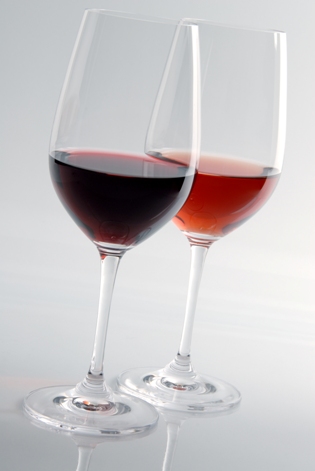The Essentials of Wine Service
17 December 2009By Edward Korry, CWE, CSS
 Here’s what every wine server should know.
Here’s what every wine server should know.
When making suggestions to guests, get a sense of the kinds of wines they enjoy to avoid making needless suggestions. The server should be very familiar with the establishment’s wine list. If a wine is unavailable, the guest should be informed prior to making a selection. The server should observe the following procedures:
- Take the wine order from the host, either by name or bin number. Repeat the information back to the guest.
- Check the wine label for accuracy before presenting the bottle to the guest.
- Preset the appropriate wine glasses, and bring a wine bucket or chiller to the table if serving a white or rosé wine. Ensure that all guests who are being served are of legal drinking age. Do not set a wine glass for any underage customer.
- Present the wine to the host for verification, and repeat the wine’s brand, variety or classification, appellation and vintage.
- Confirm when the host wants his or her wine poured.
- Open the wine either by hand or on the surface of the table. Begin by inserting the worm of the corkscrew, angling it first at 45º and then straightening it out while twisting it as far as it will go. Using the lever on the mouth of the bottle, extract the cork by ensuring the shaft of the worm is vertical.
- After twisting the cork off the worm, place it on a doilied plate and offer it to the host. The cork is not sniffed (it won’t verify anything accurately), but checked for elasticity and level of wine seepage to confirm storage conditions.
- Pour 1 to 2 ounces (30 to 60 ml) of wine for the host for tasting purposes. If the wine is refused, determine the reason (corked, tainted, maderized or he or she doesn’t care for it) and find the manager.
- Each regular bottle of wine holds five 5-ounce pours. If the party includes six guests who will have wine, the server should only pour 4 ounces in each glass.
- Pour wine in a continuous flow for each person from the right side and with the right hand, twisting the bottle at the end of each pour as one is drawing it away from the glass, to avoid drips.
- Return the wine to the wine bucket or to the chiller if a white and on a coaster or doilied plate on the table with the label facing the host if a red.
- Discreetly inform the host when the bottle is empty and determine whether another bottle is desired. If the host orders another bottle of wine, bring a clean glass for tasting, even if it is the same wine.
- If guests switch to a different wine, bring clean and appropriate wine glasses for all the guests and place each behind the first wine glass unless it is empty, in which case it should be removed.
- When guests have finished the bottle and do not require another, remove it from the table before removing the wine glasses.
The service of sparkling wines and wines that need decanting will be elaborated in a subsequent article.
Edward Korry is an associate professor and chair of the Beverage & Dining Service Department in the College of Culinary Arts at Johnson & Wales University in Providence, R.I.
Photo credit:© Chiyacat | Dreamstime.com, http://www.dreamstime.com/free-stock-photo-colors-of-wine-rimagefree3988850-resi1793763
